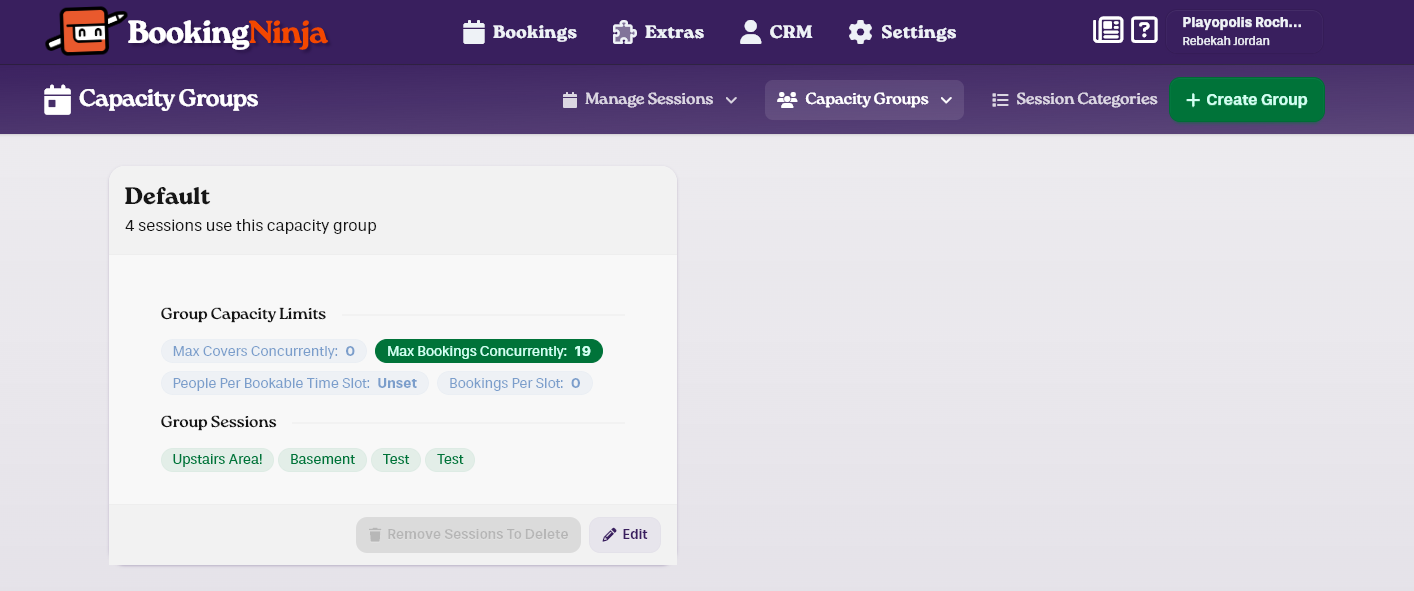You can set capacity in a session, but you can also use capacity groups to link sessions together.
For example, you can run two types of play session, or two types of dining experience, at the same time, but have bookings in both count towards a single limit.
This means you can control how many bookings can occur across different types of sessions, giving you flexible control over your venue's capacity management.
You may not need Capacity Groups!
If you use yield management, it's likely you don't need to use capacity groups. With yield management, your capacity is automatically managed based on tables.
You also don't need to use capacity groups if you have a single session!
When you place multiple session types into the same capacity group, the system will count all bookings across these sessions collectively when enforcing limits such as:
Maximum number of bookings allowed at one time
Maximum number of guests across all sessions
Other capacity-related restrictions
Session types not included in a capacity group will be managed independently and won't affect the capacity calculations of your grouped sessions.
Capacity groups are managed through the panel in your session settings, where you can create new groups and edit ones you have.

To link a session to a group, create the group if you haven't already, and then link the session using the drop down in your session settings.

Example: A restaurant offers both "Lunch" and "Business Lunch" session types, but has limited total capacity.
By placing both session types in the same capacity group, the system ensures you don't exceed your total restaurant capacity regardless of which lunch option customers book.
Without capacity groups, the system would treat these as separate sessions and could potentially overbook your venue
Example: A venue offers standard dining plus specialty events, like parties.
Create a "Regular Dining" capacity group for all your standard dining sessions
Create a separate "Party" capacity group for various party sessions (birthday parties, corporate events, etc.)
Set the "Party" capacity group to allow only one party booking at any given time
This ensures you can run regular dining operations while limiting yourself to hosting only one party event at a time
Default Settings: Each capacity group has configurable default settings that apply to all sessions within the group
Individual Overrides: You can set specific session types to exceed the standard limits defined in their capacity group if needed
Comprehensive Counting: Every booking in a capacity group counts toward its limits; bookings outside the group have no impact
Separate from Table Assignment: Capacity groups only control booking limits, not how tables and seats are assigned (yield management settings are configured separately)
Venues with us before March 2025 may be used to setting max bookings and max covers through the venue limits page. These are now set through the capacity group system.
You'll find a "Default" capacity group has been created for you. Changing the settings here works exactly the same as the previous global setting, because all your sessions are in this group.